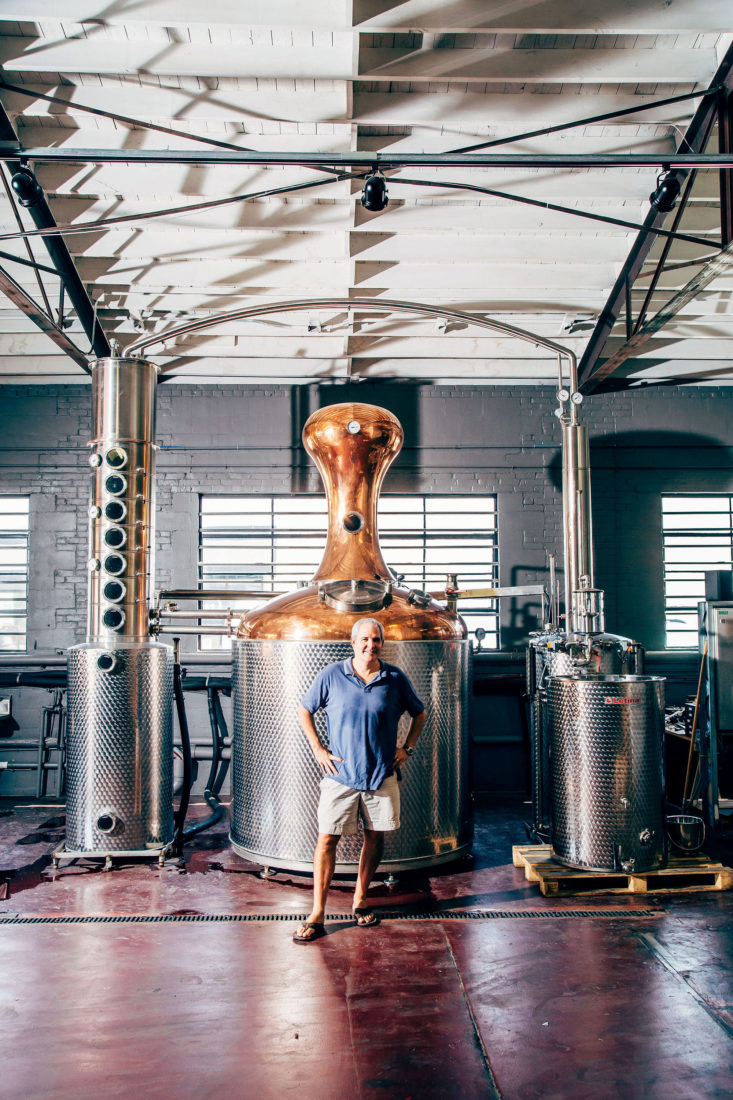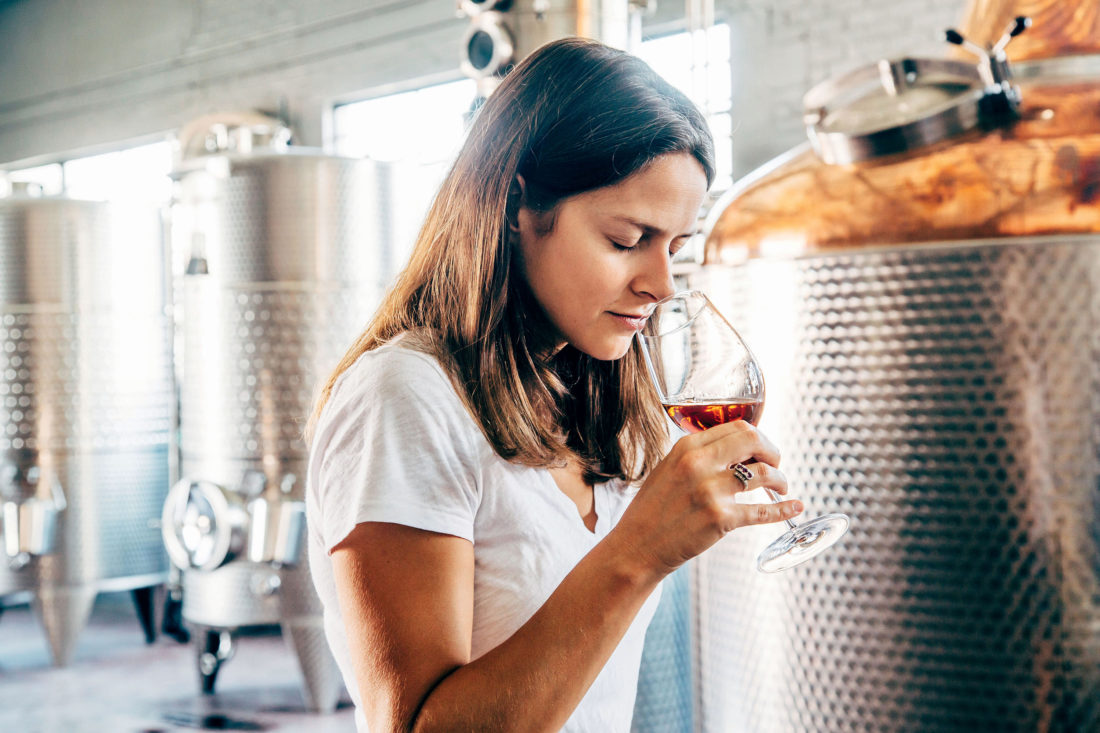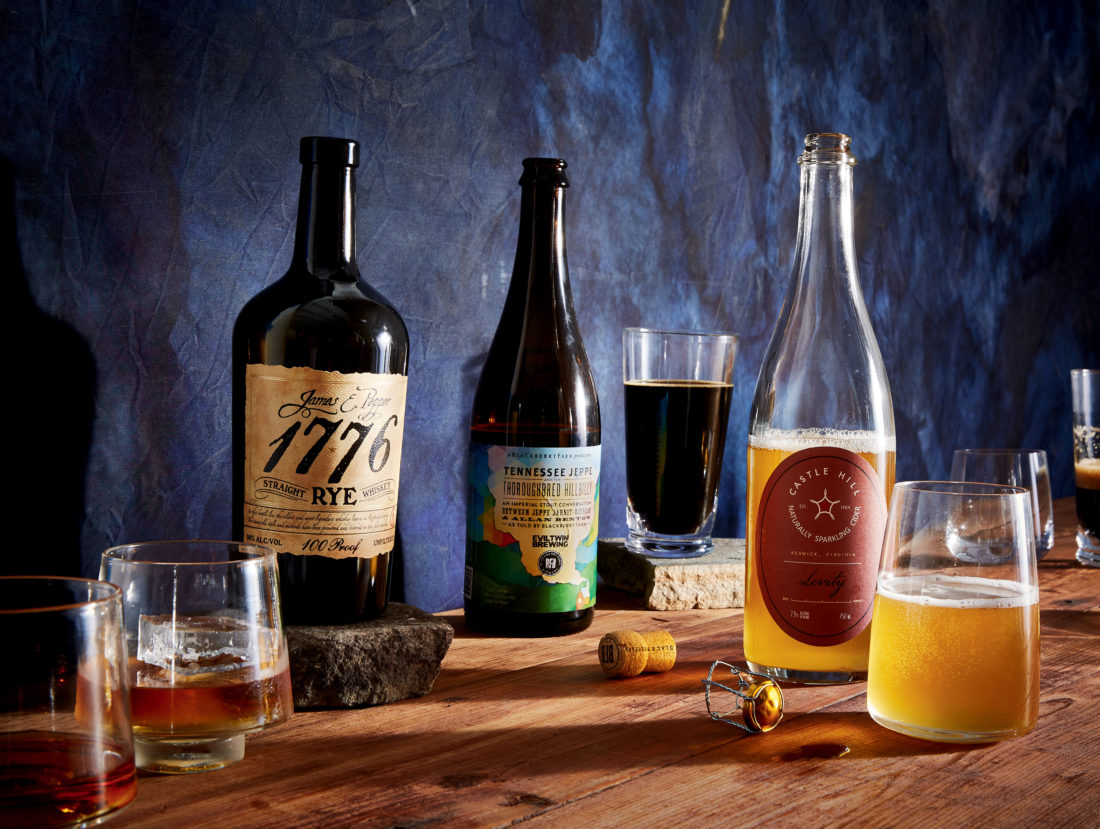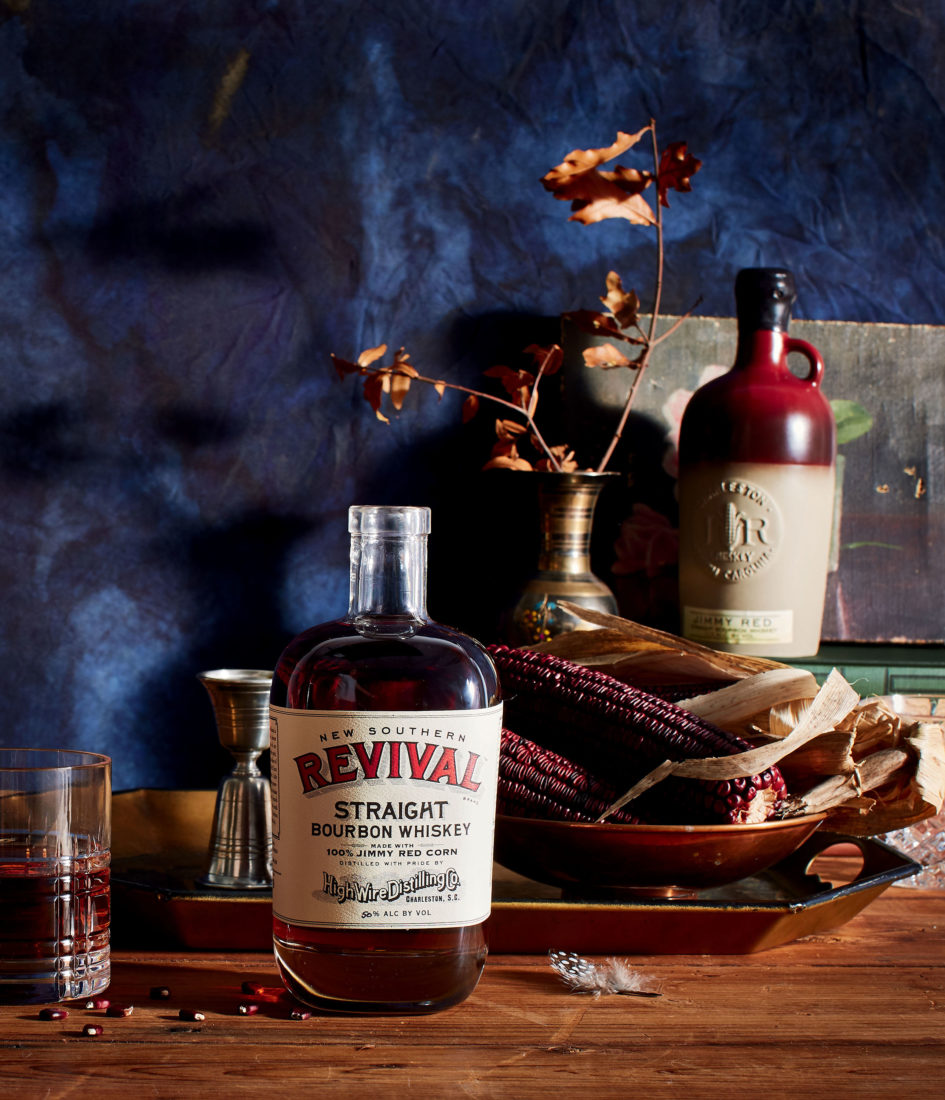Drink Category &
Overall Winner
High Wire Distilling Co.
Bourbon
Charleston, South Carolina
$80 Glass Bottle, $110 Le Crueset Stoneware Bottle
highwiredistilling.com
It’s a bit unsettling to see a roomful of whiskey experts reduced to a confused silence. But that’s just what happened at a spirits industry event in 2016, when High Wire Distilling Co. served up some of the first of its New Southern Revival Brand Straight Bourbon Whiskey. “What flavoring grains are you using?” asked one of the curious tasters. “None. It’s just corn,” replied Scott Blackwell, who with his wife, Ann Marshall, owns and runs the distillery, based in Charleston, South Carolina. The room went silent again.
The surprise came from the fact that bourbon made from
corn alone tends to be short on character—it’s too flabby, too sweet, too lacking in defining edges. Bourbon distillers invariably make their product by mixing corn with rye or wheat to layer in some taste topography. But here was a pure corn whiskey that had the nuance of a complex bourbon.

Photo: Peter Frank Edwards
High Wire Distilling Co.’s Scott Blackwell at the Charleston, South Carolina, headquarters.
What was High Wire’s superpower? Turns out, it was Jimmy Red corn, a once nearly extinct variety thought to have been named for James Island, in Charleston. In recent years, Jimmy Red has been rediscovered—chef Sean Brock, among others, has used the grain in dishes such as grits. “You can taste the quality of the corn that goes into the still,” says Drink category judge Miles Macquarrie. “It’s sweet, and it has the nutty quality of butter starting to caramelize.”

Co-owner of High Wire Distilling Co., Ann Marshall
Glenn Roberts, founder of Anson Mills and a pioneer in reviving heritage grains, tipped off Blackwell to Jimmy Red’s potential for whiskey—he’d heard the corn was once beloved by coastal moonshiners. Blackwell and Marshall thought, why not? The only problem: finding enough corn to make a batch. They obtained some seed corn from Roberts and had Clemson University’s Coastal Research and Education Center plant a couple of acres in 2014. That first harvest, they hauled back the lustrous deep maroon kernels, fed them through their mill, made a mash, and set it to fermenting—whereupon they discovered that this was not at all like the commodity yellow corn that many bourbon distillers rely on. Instead, this grain produced a thick and unctuous fermented mash, which, Blackwell says, “smelled like banana Laffy Taffy.”
The distillate went into a couple of barrels, and the waiting began. They sampled from time to time, Blackwell says, and it just kept getting better. After two years, they decided it was ready, and released 750 bottles at cask strength. By then word had gotten out that they were on to something. The entire run sold out ten minutes after it went on sale at the distillery.
This was gratifying for Blackwell and Marshall, largely because it confirmed one of their early insights. Many distillers work as if the magic lies wholly in the copper still and oak barrel. But High Wire takes it back to the land. “There was sort of an aha moment for me,” Blackwell says, “when I realized all booze is agricultural.” They’ve also attracted notice for their experimental rum made from South Carolina sugarcane, and brandy from heirloom watermelons. And they’re betting consumers will pay for rarity and quality—Jimmy Red costs about ten times as much to produce as the higher-yield yellow corn, which means a bottle price nearing one hundred dollars, depending on the retailer.
Now Blackwell and Marshall are all in—they’ve stepped up production of Jimmy Red corn, and this past year found four farmers around the state who “were willing to go down this road with us,” Blackwell says. They’ve gone from two barrels produced in 2016 to twenty-six released over this winter. And they plan to lay down between 175 and 200 barrels to age by the end of 2018, which leaves a bright forecast for 2020.
“Some of this is just shooting from the hip, but that’s where innovation starts,” Blackwell says. “Just being willing to try it.”
Drink Category Runners-Up

Photo: Jennifer Causey
From left: Rye Whiskey from James E. Pepper Distillery, Imperial Stout from Blackberry Farm, and cider from Castle Hill Cider.
James E. Pepper Distillery
Rye Whiskey
Lexington, Kentucky
$35, jamesepepper.com
“This was a ten-year historical research project for me,” say Amir Peay, owner of the James E. Pepper Distillery. His goal was to re-create the whiskeys made at the original Pepper distillery, which opened in 1780 and operated until 1958. Peay, who has a background in wine and whiskey, fired up the new still last winter with his master distiller, Aaron Schorsch—those ryes and bourbons are now slumbering in barrels, where they’ll remain for a few years. Until then, to bottle the 1776 Straight Rye Whiskey, he’s hand selecting barrels from a contract distiller to blend in order to reflect the original recipe. Add an ice cube to the full-bodied rye, with its notes that evoke vanilla layered atop a marzipanesque base, and subtle flavors of baking spices bloom.
Blackberry Farm Brewery
Imperial Stout
Walland, Tennessee
$18–$25, blackberryfarm.com/brewery
Tennessee Jeppe and the Thoroughbred Hillbilly is quite a long name for a beer, and that’s before the subtitle: “An Imperial Stout Conversation Between Jeppe Jarnit-Bjergso and Allan Benton As Told by Blackberry Farm.” The sable-dark brew came about as a discussion between Roy Milner of Blackberry Farm Brewery, and the noted Brooklyn brewer Jeppe Jarnit-Bjergso. “I always loved smoked beer,” Milner says, and they figured an imperial stout would make a great vehicle for it. They then sought out the cure master Allan Benton, who invited them to hang bags of malted barley in his smokehouse. A limited supply of their initial “conversation” followed—each bottle filled with toasty-chocolaty goodness. The exchange continues this winter with the release of a second batch—made with the same recipe but aged in maple-syrup bourbon barrels.
Castle Hill Cider
Cider
Keswick, Virginia
$25, castlehillcider.com
At Castle Hill Cider, you’ll find that old meets older. The orchard sits on land that belonged to the noted Castle Hill estate, which was built in 1764. To make its Levity cider, Castle Hill harvested, crushed, and fermented ten varieties of apples for three months, using terra-cotta qvevri, which are believed to be the world’s oldest fermentation vessels. “These date back to some seven or eight thousand years ago, and are still in use in the Republic of Georgia, where the grape was first cultivated,” says Stuart Madany, the cider maker and orchard manager. Madany had his set shipped from the former Soviet republic—he was the first to import them—and then buried them. The clay and the subterranean storage maintain an ideal temperature for fermentation with wild yeast. The result is a classic, dry cider with just a hint of orange peel, and a finish reminiscent of champagne.
MORE MADE IN THE SOUTH
>> See the winners and runners-up in all six categories
>> Join us in Charleston for our Made in the South Weekend: Meet the makers and shop their products; enjoy a concert with Amanda Shires and Aaron Lee Tasjan; and more. Get details and tickets here









